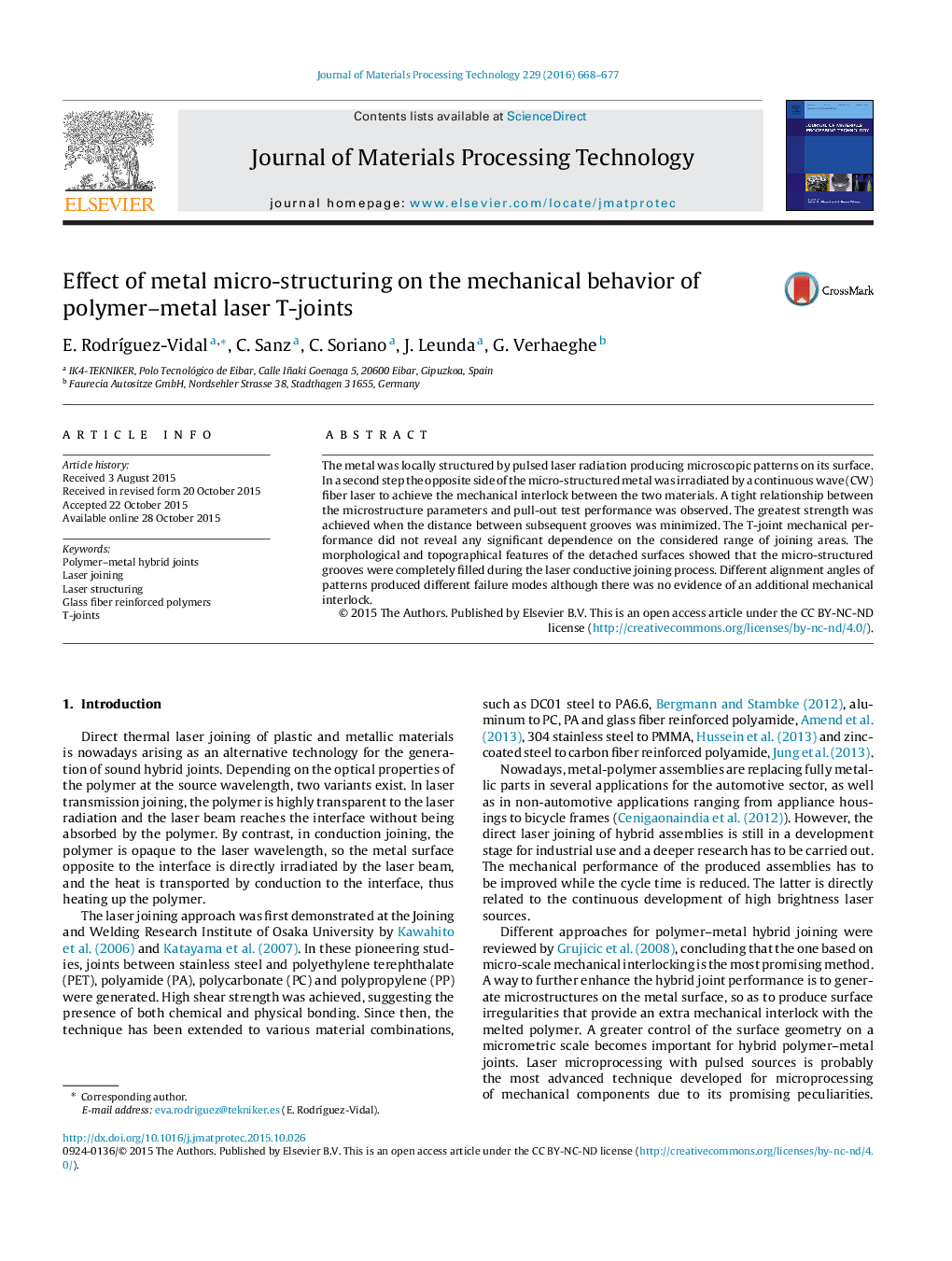| Article ID | Journal | Published Year | Pages | File Type |
|---|---|---|---|---|
| 7176883 | Journal of Materials Processing Technology | 2016 | 10 Pages |
Abstract
The metal was locally structured by pulsed laser radiation producing microscopic patterns on its surface. In a second step the opposite side of the micro-structured metal was irradiated by a continuous wave (CW) fiber laser to achieve the mechanical interlock between the two materials. A tight relationship between the microstructure parameters and pull-out test performance was observed. The greatest strength was achieved when the distance between subsequent grooves was minimized. The T-joint mechanical performance did not reveal any significant dependence on the considered range of joining areas. The morphological and topographical features of the detached surfaces showed that the micro-structured grooves were completely filled during the laser conductive joining process. Different alignment angles of patterns produced different failure modes although there was no evidence of an additional mechanical interlock.
Related Topics
Physical Sciences and Engineering
Engineering
Industrial and Manufacturing Engineering
Authors
E. RodrÃguez-Vidal, C. Sanz, C. Soriano, J. Leunda, G. Verhaeghe,
